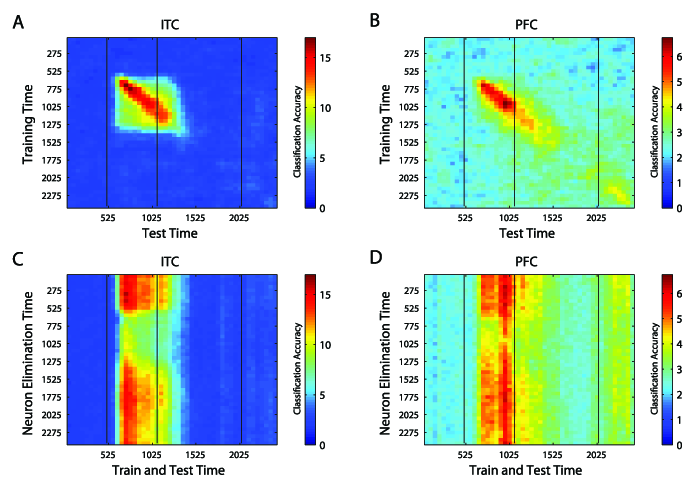
Figure S7. Identity
information is also coding by changing patterns of neural activity;
although the code changes much less for identity information than for
abstract category information (Figs. 4-5) A, B,
decoding of identity information for ITC and PFC respectively, when
training and testing using data from different time periods relative to
stimulus onset (i.e., these plots are the same as Figure 6 except they
show the decoding of identity information). Similar to figure 6,
the results show that the best performance is along the diagonal,
indicating a changing neural code with time. However during the
sample period, the code for identity information ITC changes less than
seen in the abstract category information case (Fig. 6A), as indicated
by the green square area around the diagonal. C, D, decoding
accuracies for identity information when eliminating the ‘best’ 64
neurons available at time period t1 (y-axis), and training and testing
using all other neurons at time period t2 (x-axis), for ITC and PFC
respectively (i.e., the same as Fig. 7, but for identity
information). The ‘best’ 64 identity-selective
neurons were determined by applying an ANOVA on the training set.
As can be seen, there is some change in the ‘best’ identity neurons,
however overall the neurons that contain identity information change
much less with time than the neurons that contain the abstract category
information (Fig. 7).
Home

